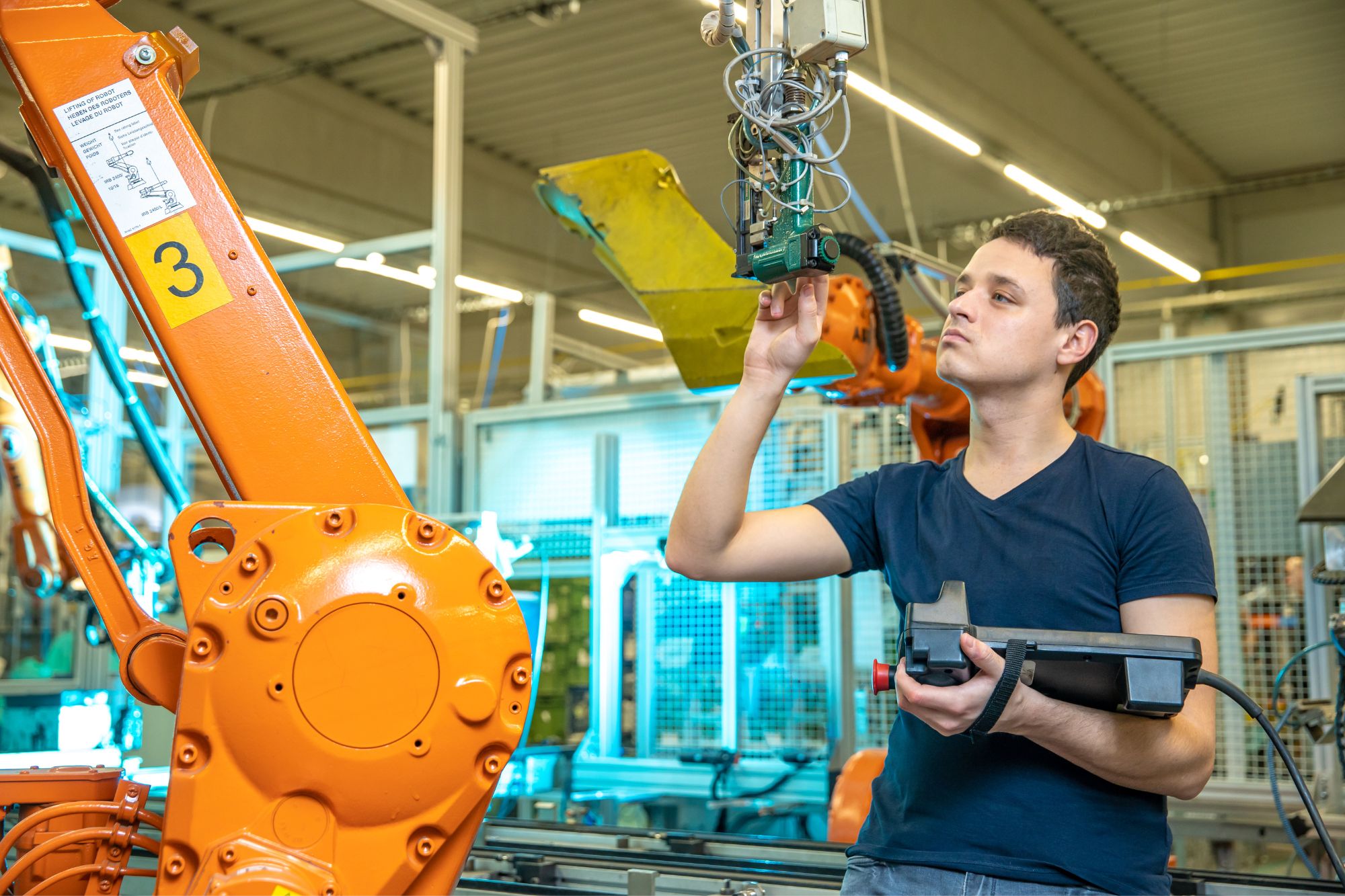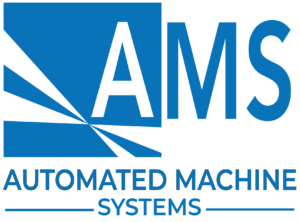Decades of experience in a range of industries
Proven processes for smooth delivery
Engineering and design expertise
Charting a Course to Manufacturing Efficiency through Automation
In so many words, the history of automation is the history of human ingenuity, finding ways to do more with less on ever-increasing scales. It's very interesting to think that ancient waterwheels and modern autonomous vehicles exist on the same continuum, both being the result of human invention replacing the need for physical labor.
It's even more interesting to think that we have no idea where we currently sit on this continuum of automation — all we know is that technological advancement marches on with no apparent end in sight. This fact couldn't be more evident than in the field of industrial manufacturing, where automated solutions chart the course towards the most efficient, productive manufacturing capabilities possible.

Defining Automation in Manufacturing Machinery Applications
As a concept, automation may seem incomprehensible, being too big for one person to wrap their mind around. To the casual observer, automation may seem to be some combination of PhD-level engineering and computer science built upon abstract tools such as neural networks, machine learning, artificial intelligence, and cloud computing. In reality however, automation is much more practical. To peel away all of the commonplace marketing spin that's put on automation and see it for what it is.
Let's outline the key defining functions that automation provides in industrial manufacturing applications:
-
Motion
One of the very first forms that automation took in manufacturing was to move materials from one place to another so that a human didn't have to. Conveyors, elevators, and hoists are good examples of automated machines used to transfer materials in bulk, whereas actuators and geared positioners are good examples of small-scale devices used to move individual components.
-
Tool Processes
The next major role of manufacturing automation is found in completing work tasks, broken down into individual actions or tool processes. Drilling, cutting, grinding, polishing, punching, forming, and welding are all examples of individual tool processes that can be completely automated.
-
Compound Processes
Across its history, industrial manufacturing has strategically applied technology to run higher volumes in less time. One way to obtain this goal is to combine manufacturing actions together into compound processes. For instance,using industrial automation robotics to move, position, orient, and perform a tool process on a component all at once.
-
Inspection
Industrial manufacturing today is an ultra-competitive landscape, where profit margins and organizational health can be fatally threatened by a single poor customer experience — or worse, a product failure that harms customers. To combat such scenarios, manufacturers employ automated product quality, safety, and functional inspection systems to find product faults before they can reach a customer.
-
Safety
Further, to the above point, automated manufacturing systems not only inspect, test, and repair faulty products before they leave the plant, but also provide in-site safety protection for plant personnel. Automated safety systems can actively monitor a manufacturer's machinery, workers, and infrastructure for signs of impending safety issues, immediately intervening to avoid an accident.
-
Quality Assurance
Combining the two points of inspection and safety, automated manufacturing systems play a large role in modern quality assurance practices. By providing real-time quality control inspections and comparing these QC metrics to product safety event records, automated systems can produce a product risk profile and statistical evaluation of overall plant quality.
-
Data Acquisition
With automation being so widely integrated across manufacturing steps, the natural next opportunity is to use these automated systems to provide valuable data that can drive overall business improvements (described next). Today, most manufacturing key performance indicators are built directly on top of raw data provided straight from automated plant systems.
-
Business Analytics
With data acquired from all their automated manufacturing systems, business leaders can perform visceral analysis of just how well (or poorly) their operations are doing. This analysis can drive continuous organizational improvement, competitive advantage, financial optimization, legal compliance, and total operational efficiency initiatives.
Zooming Out - Macro Trends in Industrial Manufacturing Automation
Now that readers understand how automation is applied in industrial manufacturing applications, let's have a look at several macro trends that describe where the industry is heading in the years to come:
Automation technology developers have spent the last twenty years individually competing for their right to exist, attempting to drum up interest in the marketplace for their novel inventions. Today, the marketplace is overcrowded with redundant solutions, pushing many developers to either find new ways to prove their relevancy or to throw in the towel. Where the marketplace was once piqued by interesting, single-function solutions, now it demands simplicity, wider applicability, fewer standalone programs, and more cross-platform integration overall.
Carrying on with the cross-platform integration topic , technology developers today largely require the use of off-premise, cloud-connected platforms to provide the computational bandwidth needed by their applications. Everything from financial to enterprise resource planning applications, forklift telematics to machine health management programs, and so on force businesses to utilize cloud platforms. On one hand, this is a cost-effective way to share computing power and backend service costs with other subscribers, but on the other hand, it introduces tremendous new cybersecurity and data privacy risks to manage.
It is no secret that labor availability is a major concern among manufacturers (and most employers seeking skilled talent). An interesting new application of automated solutions is to natively provide skill training and workforce development alongside the work functions being performed. In addition, automated systems are increasingly selected to free up skilled human labor specifically to be retrained for higher-value roles. The difference is that automation is now being applied to more tasks than just the usual “menial and redundant” type jobs, but to mid-skill jobs where those operators can be better utilized in even higher tier positions once freed up.
Zooming In - Equipment Solution Trends in Industrial Manufacturing Automation
Macro trends are always interesting to understand so that we can all make sound, informed decisions concerning long-term automation investments, but what about micro trends that impact current projects that we all have going on right now? Let's zoom in to specific equipment solutions that readers can consider for near-term manufacturing applications:
Simply put, one of the quickest ways to enhance manufacturing equipment is to increase its production rate. As long as quality and accuracy are unchanged, faster is almost always better. Replacing conventional motion components with robotics is a surefire way to speed up individual and compound equipment functions. For example, using a six-axis robot to replace separate linear and slide actuators can consolidate many individual motions into a single path. Using that same robot with interchangeable arm accessories can further reduce independent sequential functions into a concise, fluid, ultra-fast process.
Manufacturers that perform quality control inspections at the end of a production process inherently incur the highest time and cost losses per each rejected product. This is because a product will complete its entire manufacturing process before errors are found, consuming resources that could have been avoided if the errors were discovered sooner. For this reason, manufacturers can integrate QC checks directly into their core production systems, so that errors are caught immediately and can be reworked before the product leaves that work cell. Torque, fastener presence, part orientation, leakage, weld profiles, label presence, stake head form, and so many more conditions can be instantly checked using automated QC instruments installed within individual workstations.
If a product were to fail in a customer's hands, a manufacturer must be able to identify why the product failed and how such a situation can be avoided in the future. With complete traceability for all materials, resources, child components, tool processes, and consumables used in the production of that product, a manufacturer stands the best chance of being able to evaluate and pinpoint where the failure originated. Automated equipment can facilitate this traceability by using integrated identification methods (such as RFID tags, barcodes, QR codes, and imprinted serial numbers) along with data acquisition and data warehouse systems (such as production data generated by each machine's PLC reported back to a central historian server).
Casting Off with Custom Automation
As the industry navigates the years to come, it's clear that industrial automation will serve as both map and compass — a map showing the technological trends plotting into the future, and a compass to guide manufacturers to the right level of automation cost-benefit for their specific needs along the way. To this end, custom automated machines provide the best way to achieve this ideal cost-benefit point. Just as with our mini-case studies listed above, any manufacturer can work with a qualified industrial automation company to develop custom solutions that serve specific challenges and objectives. Even better, if a custom automation solution is developed with the above macro and micro trends in mind, buyers will be best set up for maximum efficiency and overall long-term success.
